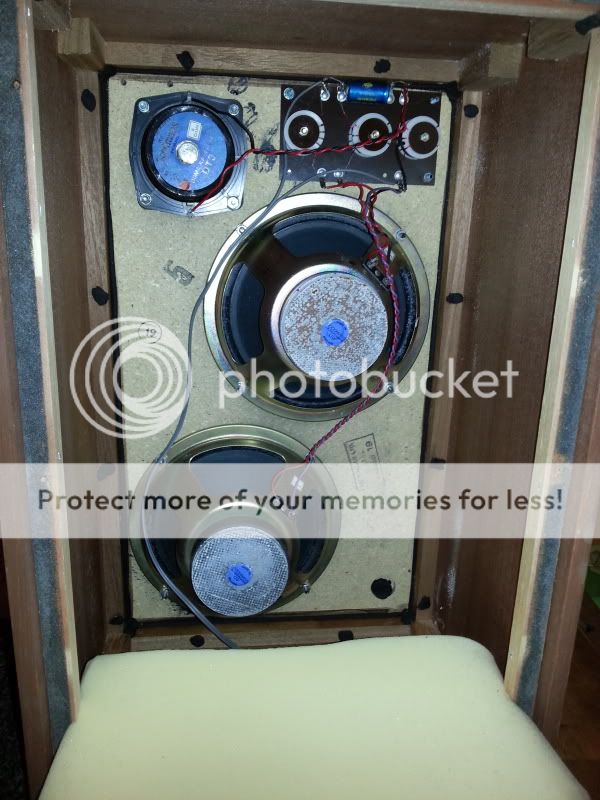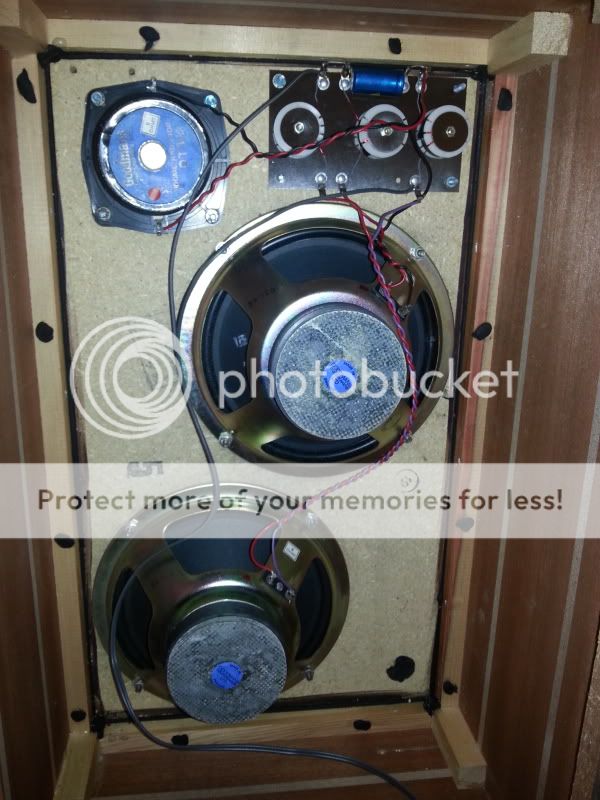retrospective
pfm Member

I've picked these up cheap £5.50 ebay punt and apart from hmv stamped on the back there's no other information.I've googled like a mad man for the last 3 days and come up a total blank.
Any help will be appreciated

Where does it look roughly cut? All I can see is a wobbly line of black sealant and hardwood beading, there's no cut edge visible.
The line above the tweeter is a super thin sealant line, almost transparent, check the print you can see through it. The baffle is screwed in place all the backs of the screws are sealed. not sure about those two dots though.

